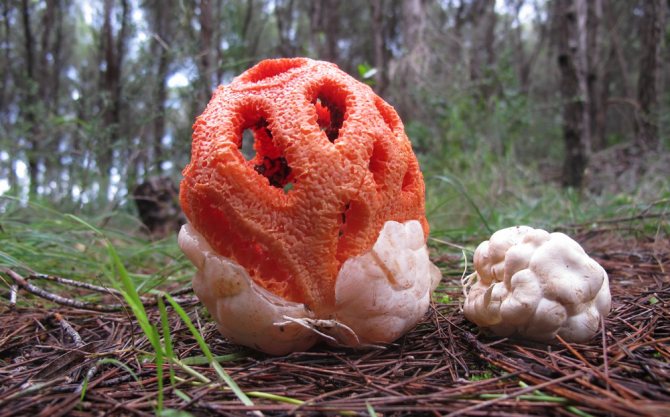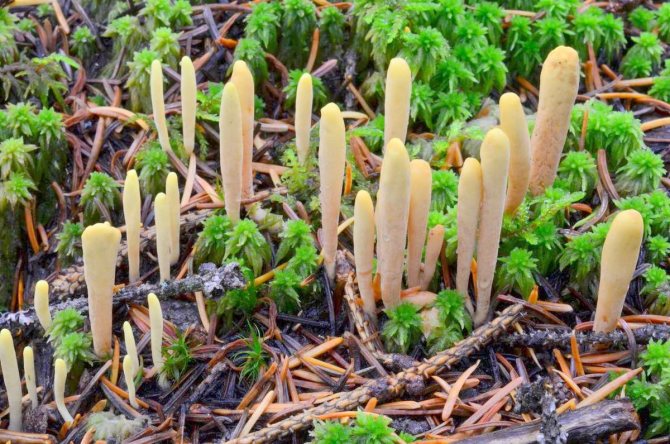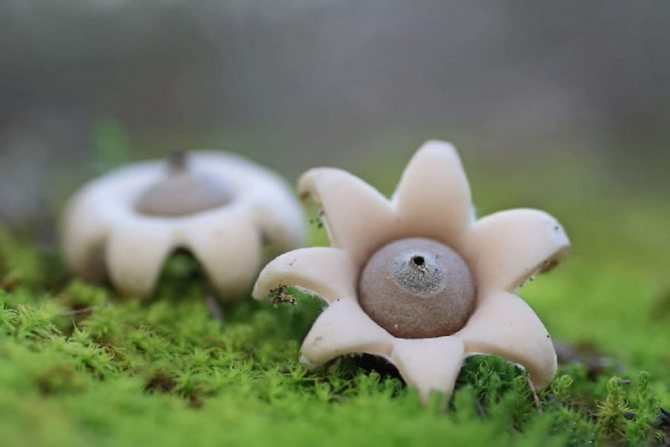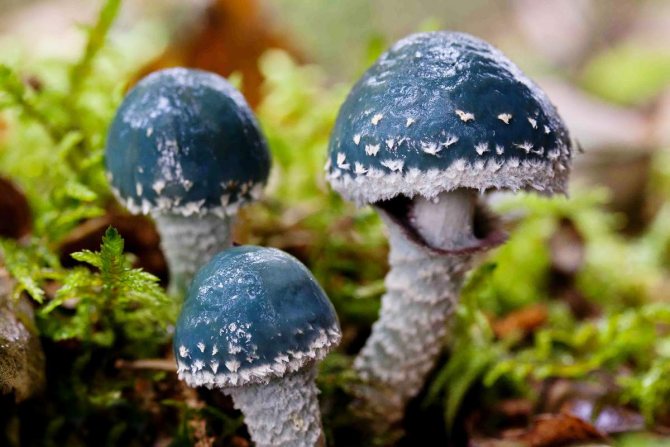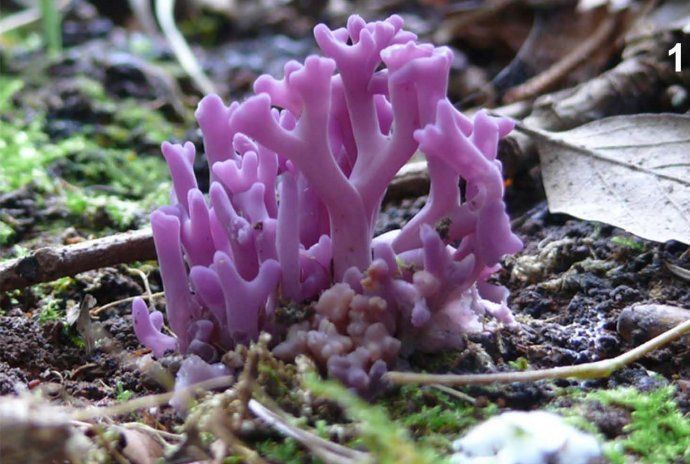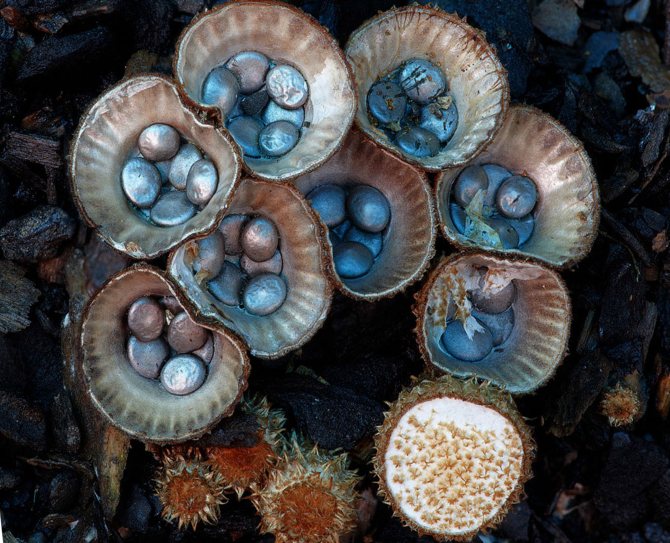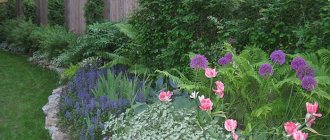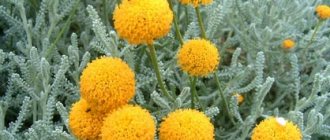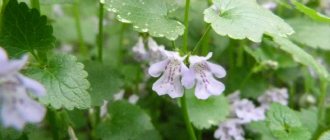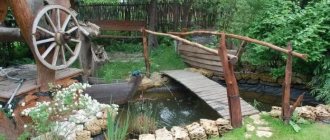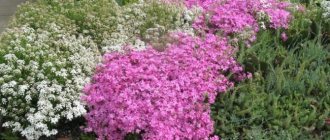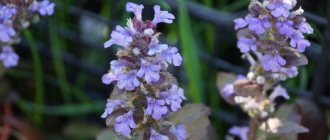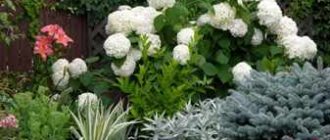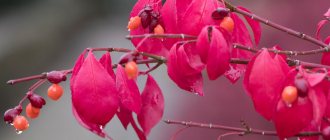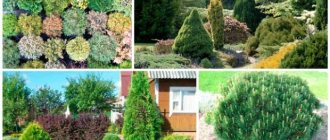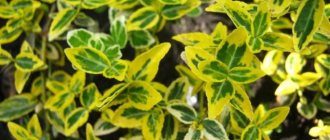Description
Aleuria orange - a marsupial mushroom that does not have a standard structure for ordinary mushrooms. The cap and leg are not separately expressed.
Fruiting body
The fruiting bodies of aleuria of the species under consideration are represented by a saucer-shaped apothecia or closer to an ear-shaped form. Such formations can reach a size of up to 10 cm in diameter, but are often smaller.
The fruit body of these mushrooms is sessile, that is, it does not have a pronounced stem, but is attached directly to the substrate. These formations often grow in large associations, in which individual fruiting bodies seem to creep on top of each other.
Inside the "bowl" the mushroom has an orange color and a smooth surface, and outside there is a whitish fluff.
Spore-bearing layer
The spore-bearing layer of orange aleuria is represented by hymenium, which is located inside the apothecia (that is, it occupies the inner surface of the "bowl"). The hymenium is smooth and bright orange.
Pulp
Orange aleuria has a cartilaginous fragile but hard pulp. This pulp has a pleasant, but mild, taste and aroma.
Spore powder
The spores are large in size and have a mesh surface. In bulk, they are white powder.
Earth star (Geastrum rufescens)
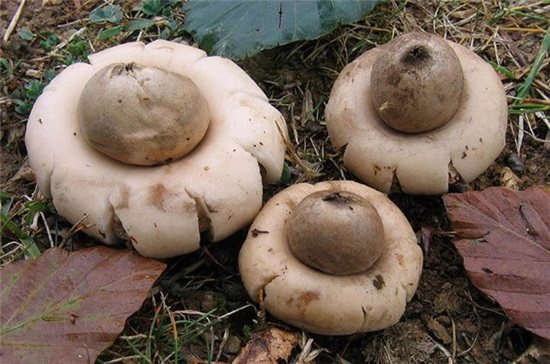
An inedible mushroom that appears above the surface of the earth, like an outlandish flower that has opened. It belongs to raincoat mushrooms, cosmopolitan and is widespread throughout the world. The inhabitants of the Indian tribes believed that this mushroom was able to predict unusual natural phenomena.
Distribution and collection
Orange aleuria is a widespread mushroom. It is found everywhere in the temperate climatic zone within the northern hemisphere. It grows both in the mountains and on the plains. The substrate for this fungus is soil. It can grow in a forest belt of both deciduous and coniferous trees. But with the same frequency it grows in park and roadside areas.
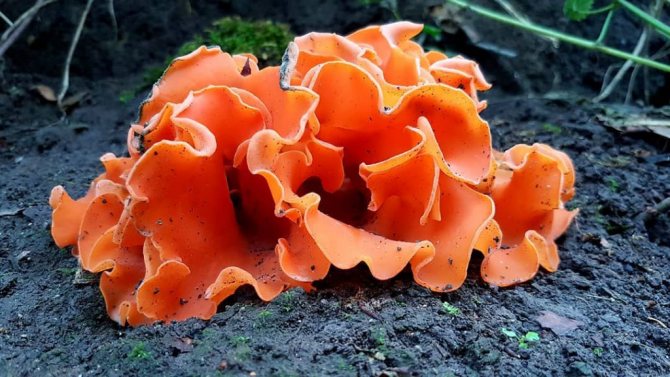

The growth period of orange aleuria is observed from summer to late autumn.
Blackberry (Hericium erinaceus)
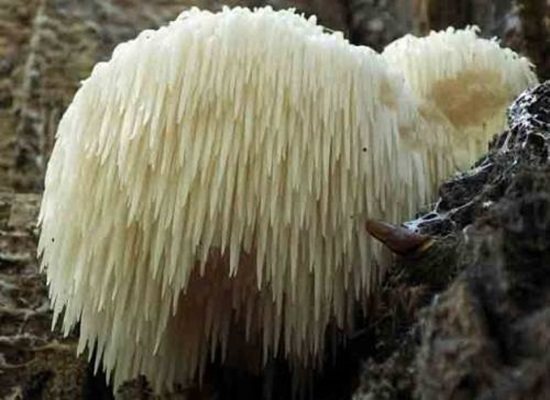

Outwardly, the mushroom looks like a bobtail dog, it is edible and widespread in Europe and Asia. Its taste is similar to shrimp. And blackberry comb is used to strengthen immunity, in the treatment of chronic gastritis and malignant neoplasms in the gastrointestinal tract.
Similar species
Orange aleuria is similar to the following types of mushrooms:
- Hair chalice or Melastiza chateri
This mushroom is smaller in size, and therefore has no gastronomic value. Has a redder hue of the fruiting body and a fringe of "hairs" around the edges.
- Sarcoscifa scarlet (or bright red)
This fungus grows on a substrate of decaying wood. Found across the globe. Various sources note that it is edible and also has medicinal properties. Also used in decorative compositions.
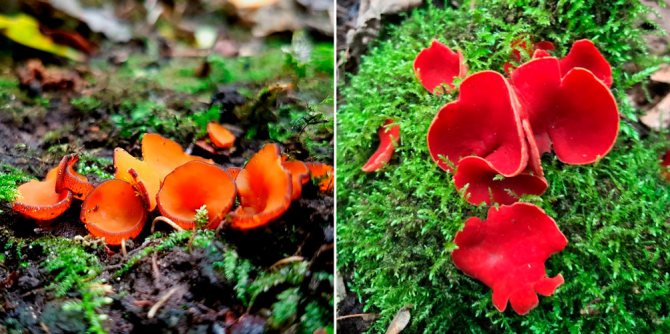

1- Hair chalice or Melastiza chateri 2- Sarkoscifa scarlet (or bright red)
Orange aleuria has no poisonous analogues. However, mushroom pickers often bypass both her and similar species, not knowing about the edibility of this mushroom.
The best mushrooms for the garden
There are two groups of real mushrooms that you can plant in your country house.
Forest species of mushrooms
The first group is natural mushrooms that grow in forests. If your site has retained its original state to the maximum, resembles a picture of wildlife, then it is forest mushrooms that will look organic in it.
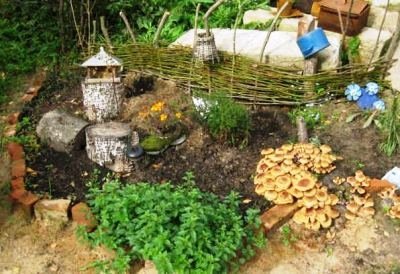

The mushroom mushroom grows very quickly, so all the empty places in the flowerbed in a year can be filled with shiny hats of forest beauties
Not every forest "inhabitant" takes root on the site. No species likes fruit trees, which means that mushrooms have no place in this part of the garden. But birch, oak, ash, aspen, conifers are the best "companions" for mushrooms.
The mycelium entwines the root system of trees, helps it to develop actively and, in turn, takes nutrients for itself. Without such symbiosis, forest mushrooms cannot grow. Moreover, each species (aspen, boletus, etc.) requires a tree with the same name.
Oyster mushrooms can be called the most adapted to the move. If only they had a forest stump! If there are old trees on the site, then they should not be uprooted. Cut the trunk, leaving a meter-high stump, and "add" honey agarics there. For about five years they will delight you with their unusual design and delicate taste (until the stump decays completely).
But how to breed mushrooms in the country:
- Wait until autumn, when honey agarics appear in the forest.
- Cut the old tree into 0.5-meter-high chunks and immerse them in water for 3 days.
- Also moisten the stump from the tree with water, pouring from above with a hose or watering can.
- If the wood is dense, without cracks and chips, go over the chocks with an ax, making longitudinal cuts.
- Hollow out a hole in the center of the stump.
- Dig the chocks halfway into the ground, choosing a shady and damp spot on the site. It is possible right next to the stump, if there are tall trees nearby or a shadow from the building falls. At the same time, pay attention so that the chock becomes correctly: the lower part of the trunk is in the ground, the upper part is outward. If you mix it up, moisture will accumulate weakly in the wood, since it is used to moving from the roots to the crown, and not vice versa.
- Go to the forest and pick up a bucket of overripe honey agarics, whose caps have already become limp and sticky. Grab a bag of moss there.
- Chop honey agarics into small pieces and fill with settled water from a barrel so that they are completely immersed.
- Press down with a load so that it does not float, and leave to get wet for 5 hours.
- Pour the finished mixture onto the chocks, trying to moisten all the areas evenly, and hammer the hard particles of the mushroom into the cracks on the chocks.
- Cover the tops with moss to trap moisture.
- Pour some of the mixture into the hole on the stump, cover it with wet sawdust and peat on top.
- Spill the rest of the mushroom solution near the dug-in chocks and under the trees to infect a large plantation with mycelium.
- If the fall turns out to be dry, water the stumps, keeping them moist until winter.
In two years you will have your mushrooms.
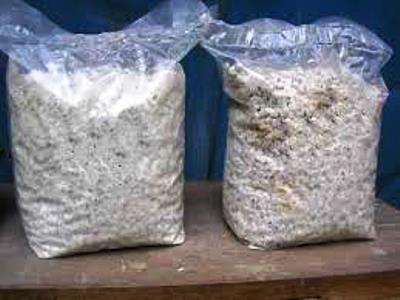

Today, the mycelium of all kinds of forest mushrooms can be bought on the Internet or in specialized stores. A kilogram of mycelium is enough to decorate the summer cottage
To speed up the growing process, you can buy ready-made mycelium. In this case, the entire process of replanting the mushroom is carried out in the spring.
Artificially grown varieties
It is much easier to grow mushrooms that are cultivated by humans. These are champignons and oyster mushrooms. Their substrate is sold in many stores, and in different forms: in blocks and bags.
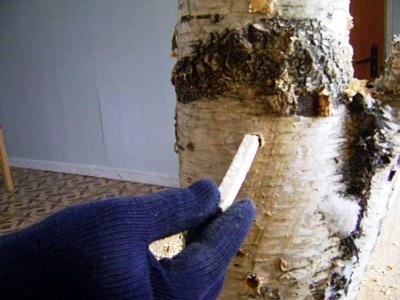

It is worth buying mycelium in sticks (or cubes) for those summer residents who just need to create 2-3 mushroom hemp, since their packaging starts from 100 grams.
Linen baskets can be called the original container for planting oyster mushrooms. They are well ventilated and fit well with all rustic landscape styles.
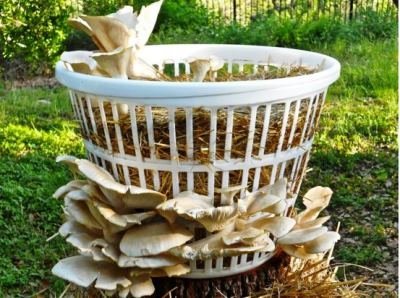

Laundry baskets are beneficial for growing mushrooms in that they are bought for many seasons, because plastic is not subject to decay and at the same time has a beautiful appearance
Instructions for planting oyster mushrooms:
- In the fall, stock up on straw or chopped stalks of harvested corn. There is a bag of straw for 1 laundry basket.
- At the end of winter, buy oyster mushroom mycelium (a kilogram will cost about $ 3).
- In February, the straw substrate must be soaked in the bathroom for 3 hours (the initial water temperature is 95-90 degrees).
- Drain the water, and leave the straw to cool completely in the bathroom.
- Tamp the straw into the laundry baskets, sprinkling the layers with mycelium. For 1 basket, count on 300 grams of mushroom mycelium. In total, a kilogram is enough for you for 3 baskets.
- Place it in a basement or dark room for a month until the outside temperature is about 10 degrees.
- Take the baskets out to a shady spot where they will stand until fall.
- Water the straw daily through the slots and top to keep the substrate moist.
- The first wave of mushrooms should start by June.
The mushroom basket bears fruit for one season. In the fall, the straw substrate can be used as a covering material for strawberry beds or dug into the garden where you plan to plant cucumbers in the spring.
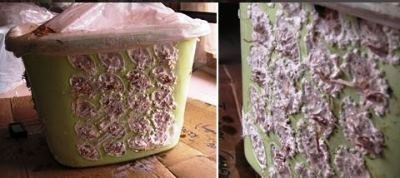

The first signs of mushroom growth will appear on the basket after about a month, forming a solid white coating on the outside of the walls.
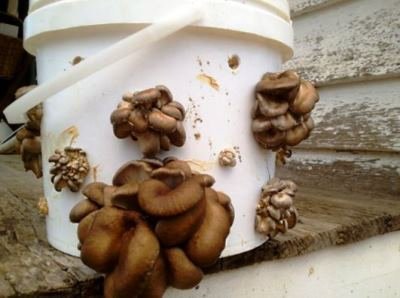

Instead of a linen basket, you can use plastic buckets for growing oyster mushrooms by drilling 7-8 large holes in them. They are hung from the cornice or wall of the building.
Interesting Facts
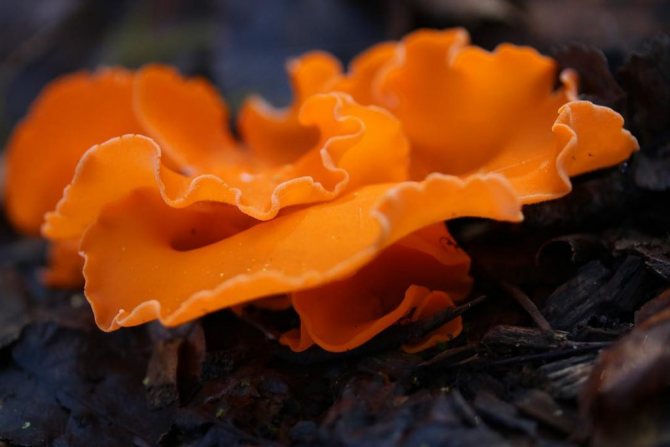

Orange aleuria is interesting mainly for its appearance. It does not have a special expression of taste and aroma. Many mushroom pickers do not collect it, as they consider it inedible. A number of sources say the same. But most often, references to the inedibility of this mushroom are associated with insufficient knowledge.
Remember that this species, like any other mushrooms, should not be eaten if allergic reactions to mushroom fruiting bodies have already been observed. Due to the high content of chitin c in the composition, mushrooms are unsuitable for eating by young children, as well as by persons with diseases of the digestive tract.
Bird's Nest (Nidulariaceae)
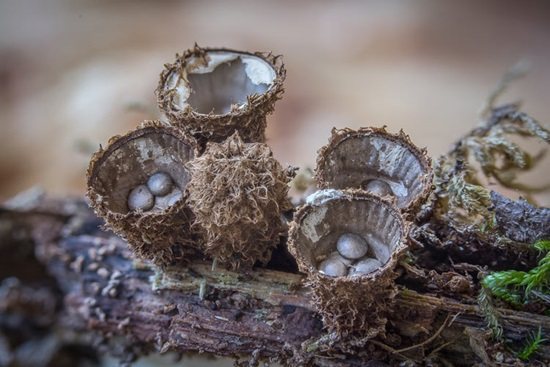

This species is native to New Zealand. It got its name from its interesting shape, which looks like a nest with small testicles, and is necessary in order to spread spores. Round "eggs" accumulate rainwater, after which they burst and shoot spores over long distances.
Pistil slingshot
Description:
- The family is "clavarian".
- Genus - Clavariadelphus.
- Status - a rare mushroom from the Red Data Book (3 R).
- Growing regions - Tatarstan, Penza, Tambov, Lipetsk regions, Stavropol Territory. In addition, the plant is found in the Caucasus, Ukraine, the Baltics, Japan, North America, and Europe.
- Habitat - mixed forests in climates with high humidity.
- Recommendations - preservation of existing and development of new populations.
Trametes multicolored
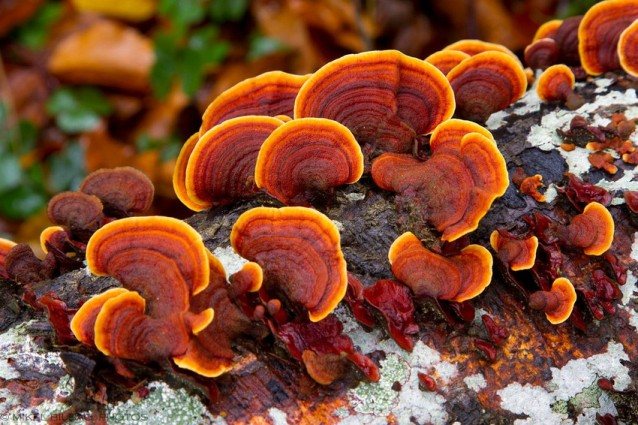

Trameteos multicolored is a type of mushroom that is widespread throughout the world and grows mainly on the trunks of dead trees, and is notable for its colorful stripes. The mushroom itself is inedible in the usual sense, but it is often used in traditional Chinese medicine. Recently, scientists have also found that a substance in this mushroom enhances immunity and can be used as an adjuvant in the treatment of cancer.
False Morel (Gyromitra esculenta)
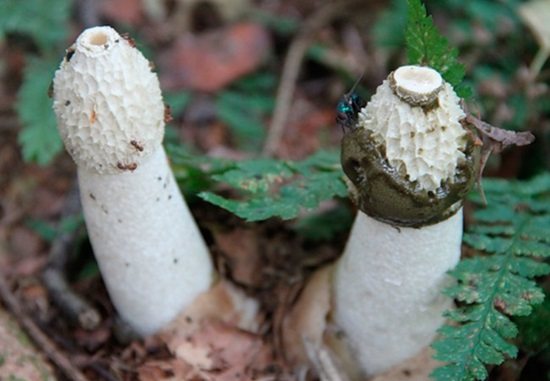

The fungus is interesting in that it looks like a human brain, painted in dark purple or brown. Also known as mushroom steak, it becomes a true delicacy when cooked correctly. But it is important to remember that raw false morels are extremely poisonous and you can cook them only knowing all the intricacies of this culinary process.
White truffles
Delicacy porcini truffle mushrooms, endowed with specific amber and unique taste, despite their wide geographical distribution, are among the most expensive and rare. This is confirmed by their second no less popular name - white diamonds.
The distribution area of white truffles is extensive. They are collected in coniferous and deciduous forests of Asia and Europe, the USA and North America. A rare species of white truffles, referred to as "golden", is found on the territory of our country in the Nizhny Novgorod, Vladimir and Oryol regions.
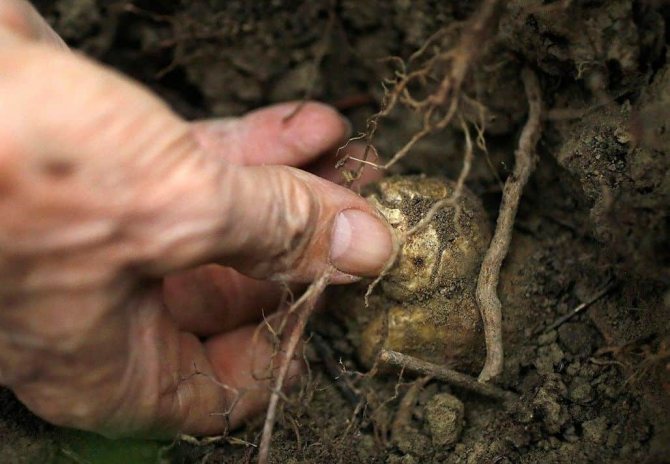

Truffles grow in compact groups and have underground tuberous fruits that look like Jerusalem artichoke. This makes it much more difficult to find and collect them.
White truffles have a light brown skin with numerous cracks. The creamy yellow flesh has a marbled texture, complemented by a scattering of red veins. For the most part, truffles are slightly larger than walnuts. But there are also specimens that exceed even large potato tubers in size and weigh about 1000 g.
Rare types of Piedmontese and Italian white truffles are prized for their refined taste and more pronounced exquisite aroma, reminiscent of the favorite smell of cheese with garlic.
4.3 / 5 ( 292 votes)
Umbrella girlish
Description of the mushroom:
- Family - "agaric".
- Genus - Macrolepiota.
- Category - rare mushroom, included in the Red Book (3 R).
- Distribution - the south of the Far East, Sakhalin, Primorsky Territory, Ussuriysky District, the Baltic States, Ukraine.
- Features - a ground mushroom with mycelium located in the lower layers of deciduous or coniferous litter.
- Fruiting - August-September.
- Habitat - deciduous, birch forests, artificial coniferous plantings.
- Recommendations - control of the state of populations and plant breeding in protected areas.
Poisonous
The false chanterelle is an inedible orange mushroom that looks like chanterelles. Its other name is orange talker. The govorushka differs from its edible counterparts in the red-orange tint of the cap and almost even edges, as well as an unpleasant odor. The cap of the mushroom varies between two and six centimeters in diameter, and the stem, which is usually very short, rarely reaches four centimeters. And yet, the false chanterelle is considered a conditionally inedible product, since it is successfully used in the cooking of other countries after a long and thorough heat treatment.
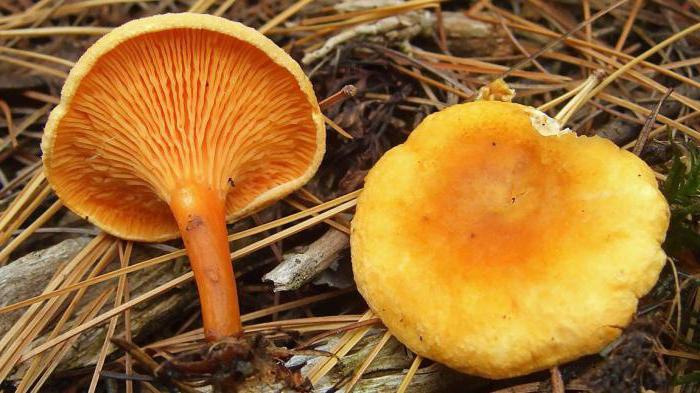

The orange-red webcap is another type of poisonous mushroom that is considered deadly. The hemispherical cap of the webcap in the very center has a small tubercle, and the leg, small in height, tapers towards the base.
So, we briefly reviewed the description of different mushrooms with orange colors. For now, let's briefly discuss how to distinguish an edible mushroom from an inedible one.

